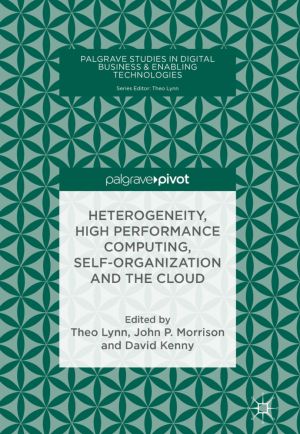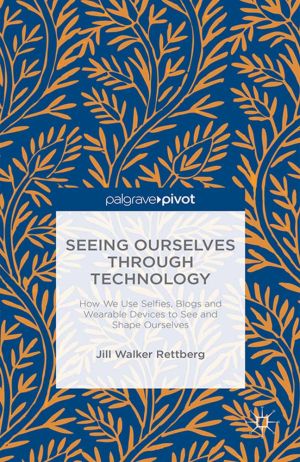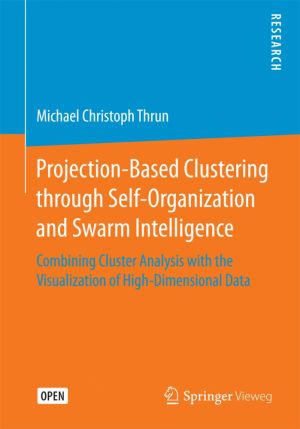Projection-Based Clustering through Self-Organization and Swarm Intelligence
Combining Cluster Analysis with the Visualization of High-Dimensional Data
by Michael Christoph Thrun
DescriptionDetailsHashtagsReport an issue 






Book Description
It covers aspects of unsupervised machine learning used for knowledge discovery in data science and introduces a data-driven approach to cluster analysis, the Databionic swarm(DBS). DBS consists of the 3D landscape visualization and clustering of data. The 3D landscape enables 3D printing of high-dimensional data structures.The clustering and number of clusters or an absence of cluster structure are verified by the 3D landscape at a glance. DBS is the first swarm-based technique that shows emergent properties while exploiting concepts of swarm intelligence, self-organization and the Nash equilibrium concept from game theory. It results in the elimination of a global objective function and the setting of parameters. By downloading the R package DBS can be applied to data drawn from diverse research fields and used even by non-professionals in the field of data mining.This open book is licensed under a Creative Commons License (CC BY). You can download Projection-Based Clustering through Self-Organization and Swarm Intelligence ebook for free in PDF format (51.7 MB).
Book Details
Title
Projection-Based Clustering through Self-Organization and Swarm Intelligence
Subject
Computer Science
Publisher
Springer
Published
2018
Pages
210
Edition
1
Language
English
ISBN13
9783658205393
ISBN10
3658205393
ISBN13 Digital
9783658205409
ISBN10 Digital
3658205407
PDF Size
51.7 MB
License

Related Books

At the core of institutional theories, 'values' is a central term and figures in most definitions; however it remains understudied and under-explored. The editors of this open access book identify a resurgence of interest in the values-construct which underpins discussions of identity, 'ethos' and the purpose/nature of public an...

This book addresses the most recent developments in cloud computing such as HPC in the Cloud, heterogeneous cloud, self-organising and self-management, and discusses the business implications of cloud computing adoption. Establishing the need for a new architecture for cloud computing, it discusses a novel cloud management and delivery architecture...

This open access book, authored by a world-leading researcher in this field, describes fundamentals of dynamic spectrum management, provides a systematic overview on the enabling technologies covering cognitive radio, blockchain, and artificial intelligence, and offers valuable guidance for designing advanced wireless communications systems. This b...

Policy-making to address grand challenges faces greater complexity than any previous project of modernization. Future scenarios are haunted by uncertainty and there is real ambivalence as to the values that policy should strive for. In this situation decision-makers look to research and innovation to provide answers and solutions. But neither can t...

Selfies, blogs and lifelogging devices help us understand ourselves, building on long histories of written, visual and quantitative modes of self-representations. This book uses examples to explore the balance between using technology to see ourselves and allowing our machines to tell us who we are....

This volume argues for the need of a common ground that bridges leadership studies, curriculum theory, and Didaktik. It proposes a non-affirmative education theory and its core concepts along with discursive institutionalism as an analytical tool to bridge these fields. It concludes with implications of its coherent theoretical framing for future e...

